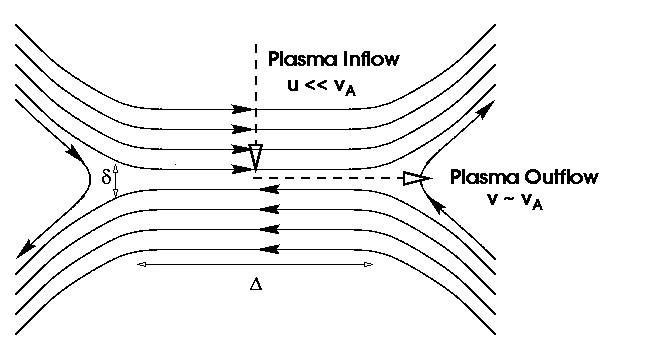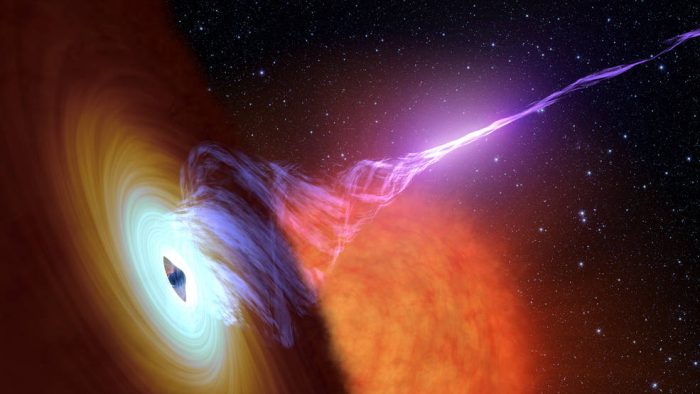The universe is full of unexplained things that we humans are trying to solve.
US Department of Energy, Princeton Plasma Physics Laboratory’s (PPPL’s) researchers have discovered a process that can cause unexplained bursts of light and heat in the swirling mass of plasma surrounding black holes and neutron stars.
What Are Magnetic Reconnections?

Magnetic reconnection means that the magnetic field line in the opposite direction in plasma is disconnected and then reconnected. In this case, the magnetic energy is converted into kinetic, thermal energy and particle acceleration. Magnetic reconnection is a physical process mostly occurring in highly conducting plasmas.
Magnetic reconnection, also jettisons massive plumes of plasma billions of miles long. These findings have the potential knowledge of fundamental astrophysical processes all across the universe. Plasma, also known as the fourth stage of ‘matter’, is made up of protons, free floating electrons and atomic nuclei, ions and accounts for 99% of the observable universe.
Read: What Will Happen If Sun Ever Collided With a Black Hole?
What Are Scientists Observing About Plasma?
Scientists are investigating ways to contain plasma within doughnut-shaped devices known as tokamaks in order to harness fusion reactions that produce enormous amounts of energy of the sun and stars in addition to explaining its astrophysical properties. Replicating fusion on earth could offer an almost limitless source to generate electricity.
What Is The Significance Of Reconnections?
Reconnection occurs when a magnetic field line breaks and reconnects, releasing energy. This process seems to be interesting for scientists because it appears to occur throughout the universe, from light-year long masses of plasma to lab bench experiments.
Using a new model and previously collected data, the researchers found that fluctuations in the plasma known as magneto-rotational instability (MRI) brings the magnetic field closer together.
As a result of the reconnection, observable heat and light are emitted inside the accretion disk.
“This process of accretion disk recombination is new to the world of plasma physics,” said PPPL physicist Fatima Ebrahimi, co-author of a paper reporting the results in the Astrophysical Journal Letters. “I’ve had numeric data stored there for a long time, and I finally understand what it means!”
What Are The Observations Of Computer Simulations?
New computer simulations have shown plasma in more detail than ever before. Other models simulate only a small fraction of the plasma, known as the shear block, and assume that the data obtained can be applied to the rest of the plasma. “The clipping box serves as a guide, but that’s not all,” Ebrahimi says.
Such boxes didn’t show any noticeable change in the plasma behavior during the reconnection.
What Happened During The Higher-Fidelity Simulation?
The higher-fidelity simulation used in this research revealed more of the in-between the steps. The lead author of the paper was Jarrett Rosenberg, a senior at the Rensselaer Polytechnic Institute (RPI) Majoring in Physics who in the spring of 2021 participated in the DOE’s Student Undergraduate Laboratory Internship (SULI) at PPPL.
For Rosenberg, the experiments were kind of research crucible. “This was a very new ground for me,” Rosenberg said. “I hadn’t studied plasma physics in school and I’ve never written a research paper. But I was excited to dip my toe into this world.”
In the future, Ebrahimi plans to explore how the MRI affects accretion disk turbulence, disturbances in the plasma that can affect how heat, light, and motion propagate throughout the disk. “We hope to run larger simulations and get a better understanding of what exactly is happening at each step,” Ebrahimi said. “That way, you learn new physics, and when more complicated things happen later on, you know why!”
PPPL at Princeton University Forest Campus, Plainsboro, NJ is dedicated to building new knowledge in the physics of plasmas and developing practical solutions for fusion power generation.
